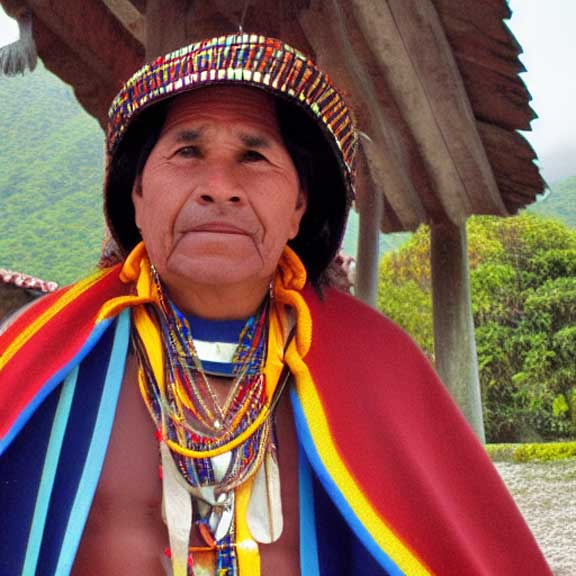Art and Technology of the Incas

The Incas are known as the last major pre-Columbian civilization in the Americas. This was a result of European colonization and disease that wiped out much of the native population, reducing their number from millions to just a few thousand by 1900.
Despite this, their legacy lives on. The Incas were skilled engineers, carpenters, weavers, and metalsmiths who transformed the Andean landscape with extensive road networks for transporting goods and people across vast distances. They built impressive stone structures that were used for storage areas, temples, homes, military sites, and royal residences. These structures also used sophisticated ventilation systems to maintain optimum humidity levels in these confined spaces.
As a result of their efforts to enhance the quality of life of their people and control over natural resources through agriculture, they managed to sustain a large population density while maintaining high standards of living for all citizens regardless of social class or caste.
Incan Agriculture and Terracing
The Incas were skilled farmers who developed terracing and irrigation systems to grow food on the steep Andean slopes. They developed a system called “Andenes” that involved creating level spaces on the rocky hillsides by building a series of stone walls. They also built irrigation channels to bring water to these areas and used special grasses and crops that grew under these conditions.
They also domesticated llamas and alpacas, which they used to produce wool, meat, and milk. They used llamas as beasts of burden, which were suitable for transporting heavy loads over long distances.
The Incan Road Network
The Incas built extensive networks of roads to connect the different parts of the empire. The roads were built with remarkable precision, using huge stones to form the surface and retaining walls of stones to hold the stone surface in place. It is estimated that over 50,000 workers were used to build the road network in some places. These roads were built with such skill that some are still in use today, over 500 years later.
The road network extended more than 30,000 kilometers, making it the most extensive road network in pre-industrial civilization. The roadways were wide enough to allow up to five llamas to walk side by side. They were also raised to protect them from flooding in the rainy season.
The roads were built from a combination of materials, including rocks, sand, pebbles, and dirt, as well as wooden bridges and stone-paved causeways. The quality of the road system varied according to the importance of the route. The royal road, for example, had bridges of “fish” stones (stones with a curved shape) that linked the royal estates of Cuzco (the capital of the Inca Empire) to the rest of the empire.
The Inca Architecture
The Incas built many impressive structures using the ‘Inkar’ technique, which involved fitting stones together without using any mortar to hold them in place. The stones were precisely cut to fit together perfectly, with no room for movement. The Incas used this technique to construct edifices and monuments such as the Sacsahuaman, Ollantaytambo, Machu Picchu, and Puma Punku. The Sacsahuaman was a huge fortress built entirely with Inkar stones. It has 17 walls, with each wall being up to 10 meters high. The stones were so perfectly placed that even a knife couldn’t fit between them.
The Incas were skilled architects who developed unique architectural techniques and styles. Some of their most notable achievements in architecture include the construction of Sacsahuaman, the Temple of the Sun, and the Coricancha.
Sacasahuaman was the largest fortress in the Andes and is the only Incan site that survived Spanish conquest. It is believed to be one of the most important architectural achievements in the Incas’ history. It was built as a military site, but it also had social and religious significance.
The Temple of the Sun was built as a shrine to the sun god Inti. The Incas believed that Inti was the source of all life and that he lived in a mountaintop called Mount Huascaran.
The Coricancha was a royal palace built in Cusco, the capital of the Incan empire. It was built using a technique called “Inca patchwork” in which stones were stacked on top of each other in the shape of a zigzag.
Other Achievements by the Incas
The Incas were also skilled metalsmiths, creating jewelry and ornaments using gold and silver. They also used these metals to make weapons, tools, and other instruments. The Incas were also skilled weavers, creating various fabrics using cotton and wool. They used these fabrics to create clothes for their people, as well as ceremonial costumes for their rulers.
They were skilled astronomers and agriculturalists, able to observe the movement of the stars, which helped them know the seasons. This led to them having a good agricultural system, which ensured that they had enough food to feed their extensive empire. They also built many temples across their empire, which were used to worship their gods.
Conclusion
The Incas are known as the last major pre-Columbian civilization in the Americas. Despite this, their legacy lives on through the artistic and technological achievements that transformed the world.
They were skilled engineers, carpenters, weavers, and metalsmiths who transformed the Andean landscape with extensive road networks for transporting goods and people across vast distances. They were also skilled agricultural engineers who developed efficient methods for increasing crop yields, and excellent architects who constructed unique architectural techniques and styles.
Incas are credited with numerous achievements including unique textile weaving techniques, a unique system of retaining walls, and the domestication of llamas and alpacas.